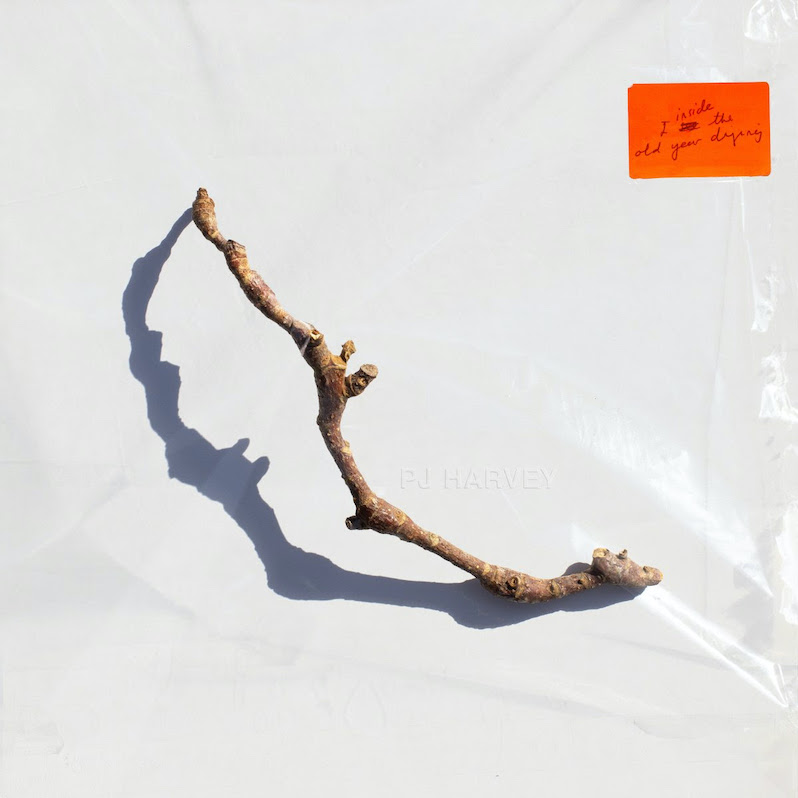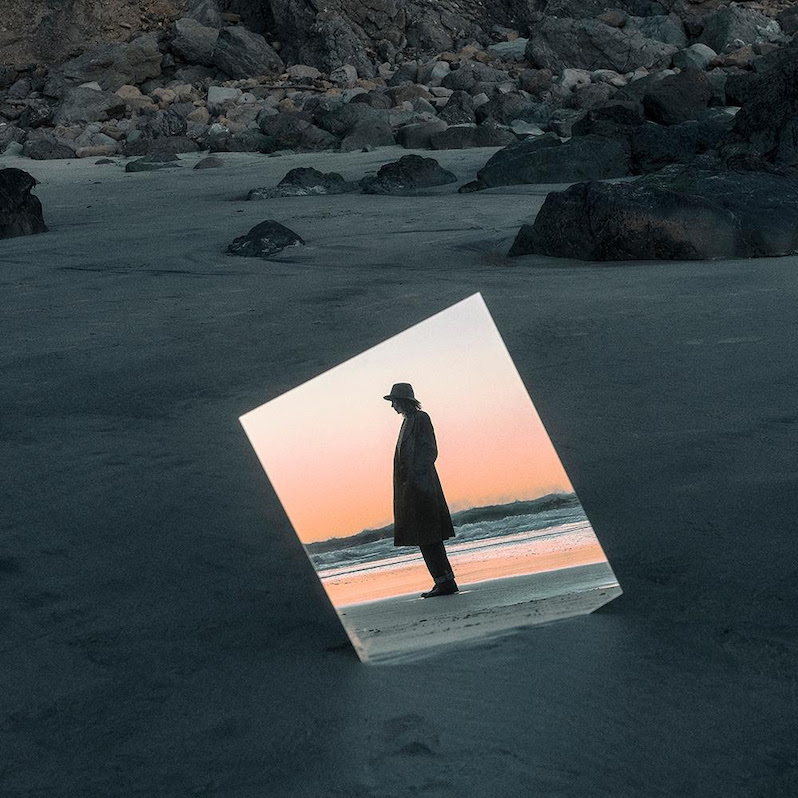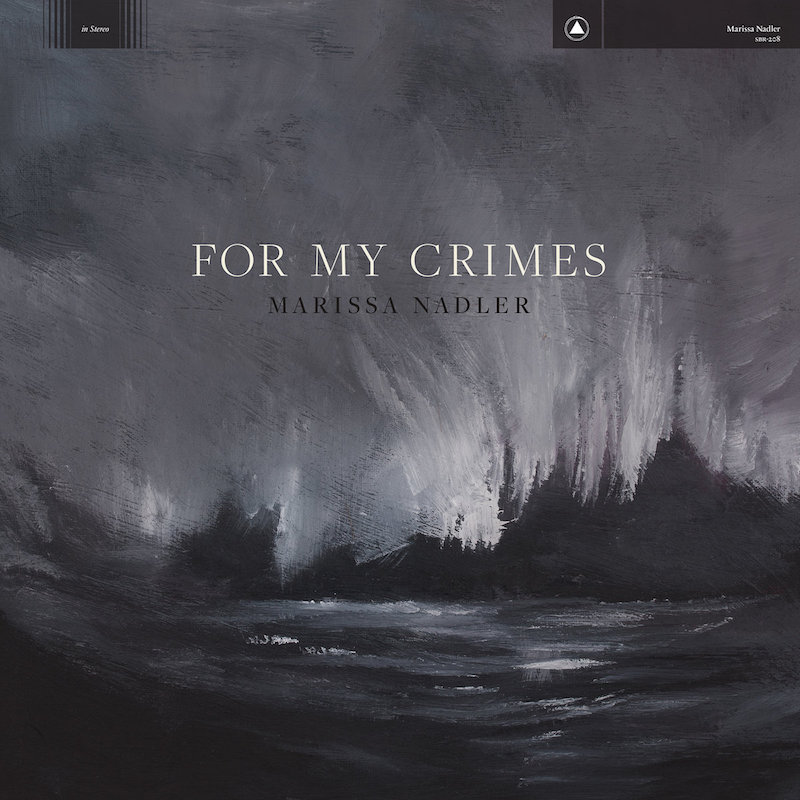PJ Harvey – I Inside the Old Year Dying

Before suggesting where she might go on her twelfth album, PJ Harvey offered an extensive course on where she’s been. Between 2020 and 2022, the prolific and creatively restless singer/songwriter reissued the entirety of her catalog—recordings both familiar and esoteric, including complete demo versions of every album she’s issued to date. It’s the most comprehensive picture of the Dorset-born artist we’ve been privy to as of yet, opening a door into her most intimate homemade recordings and stripped-down sessions. From the stratospheric view, it might have seemed like an act of demystification, but the ongoing evolution within the complete picture—from her raucous early ’90s triumphs like Rid of Me to the journalistic documentation of 2016’s The Hope Six Demolition Project—only revealed how difficult it can be to truly know such an enigmatic artist.
Yet that ample body of work also reinforced certain constants in her music, namely a simmering intensity and a desire to more deeply explore that which she hasn’t already made her own. I Inside the Old Year Dying, her first new album in seven years, checks off both of these items, each of its 12 songs taking a few steps further into a darker and unfamiliar but nonetheless mystical terrain. Harvey wrote and recorded the album in parallel with interconnected work Orlam, an epic poem written in the dialect of her native Dorset and following the journey of a nine-year-old girl named Ira-Abel, and the album feels less like a retelling of a linear narrative than an immersion into its singular universe. It’s a journey with no clear destination, taking a knotty path through mossy woods and mysterious hideaways.
Recorded with longtime collaborator John Parish and producer Flood, I Inside the Old Year Dying finds Harvey mostly continuing to leave the chaotic roar of her ’90s output in the past with rare exception; the harsh strums and squalls of feedback on “Noiseless Noise” closing the album with an unanticipated clash of sound. These moments are few and far between on what most often feels like a nocturnal tramp through misty moors and rain-soaked sylvan scenes. It occasionally offers a callback to certain pieces of her back catalogue—the anxious gothic dirges of Is This Desire? on “Prayer at the Gate,” the skeletal folk arrangements of White Chalk on “Lwonesome Tonight”—but never at the risk of recovering old ground.
Even with its handful of rocky detours, I Inside the Old Year Dying is a uniformly beautiful and haunted set of songs. First single “A Child’s Question, August” is driven primarily by Harvey’s higher register, a vocal range she had previously fully explored on 2011’s Let England Shake, but here it’s accompanied by oscillating synthesizers and a more tangibly spectral atmosphere. There’s a similarly eerie pall cast over “I Inside the Old I Dying,” flecked with gentle finger-picked guitars and a light fog of distortion. Even when Harvey offers the suggestion of a more pure rock song, as on the title track, it still wavers somewhere between folk, punk and an eerie electronic haze, sounding like nobody but Harvey herself.
In revisiting the place where she grew up, its atmosphere and its unique linguistic character, PJ Harvey initially seems to be embarking on her most intimately personal project in years. Which it very likely is, but not in any obvious way; it’s less an autobiographical album than one that pivots off a place she once knew to capture an inspiration that she had once left behind. As such Ira-Abel becomes something of an avatar through which to revisit the unique culture and feel of the place she inhabits, with songs like “Lwonesome Tonight” rife with snippets of Dorset tongue: “Hark the zingen of the birds/Gurrel yearns to yet un-girl.” That same song likewise showcases how Harvey seems to be having more fun playing with words, its title a reference to Elvis’ “Are You Lonesome Tonight” while its lyrics nod to Maundy Thursday, commemorating the Last Supper—two kings converging in southwestern England.
It’s fitting that much of Harvey’s recent work has been in making music for film and television, as that intersection of sound, vision and imagination sets I Inside the Old Year Dying. That its companion work isn’t a film but rather a work of poetry doesn’t necessarily contradict the cinematic feel of the album, as Harvey herself equates all of these sensory aspects as part of one creative continuum. “I might see a scene, almost like a scene from a film, and I’ll see the colors and the time of day,” she told NPR. “The images, the words, the music—they all feed each other.” That the background of these songs, if not necessarily the narratives themselves, come from a more personal and familiar place for Harvey only helps to color in the details as she guides us through curious detours. She invites us into her home only for us to end up somewhere much more distant and strange on the other side of that threshold.
Label: Partisan
Year: 2023
Similar Albums:
Jeff Terich is the founder and editor of Treble. He's been writing about music for 20 years and has been published at American Songwriter, Bandcamp Daily, Reverb, Spin, Stereogum, uDiscoverMusic, VinylMePlease and some others that he's forgetting right now. He's still not tired of it.




